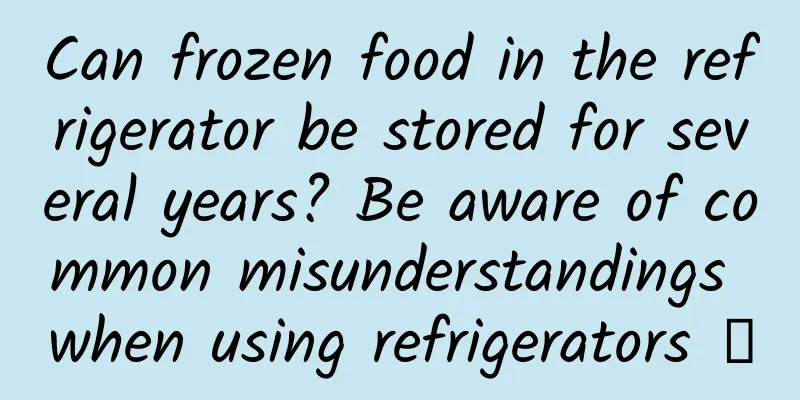Why does Coca-Cola continue to advertise heavily?

|
We often see Coca-Cola advertisements in various channels. As the top 1 in the cola beverage category, why does it need to continue to place a large number of advertisements in various channels? 1. Consolidating the positionRelevant data shows that the long-term market share of the first brand to enter people’s minds is usually twice that of the second brand and four times that of the third brand. Moreover, this ratio will not change easily. This can be experienced in Coca-Cola itself. In the United States, two out of every three soft drinks consumed are cola drinks. But what about the market situation of cola drinks? At the height of Pepsi's marketing success, for every six bottles of Coca-Cola sold, Pepsi could only sell four at most. In almost all categories of goods, the sales of the first brand always far exceed the second brand. Many marketing experts fail to see the huge advantages of being number one and over-attribute the success of those companies to their marketing savvy (I don’t mean to deny the role of marketing here). Now let’s go back to Coca-Cola’s massive advertising. In addition to doing marketing, it is also constantly creating a subtle influence in the minds of the public, solidifying its position as the number one brand in its category. Coca-Cola’s former slogan: “The most authentic cola” is considered the most classic advertising strategy. Authentic products are like first love and will always occupy a special place in the hearts of potential customers. 2. Promote sales1) Advertising objectivesThere are four advertising goals: inform, persuade, remind, and reinforce Take Coca-Cola as an example. New products such as Fruit Grain Milk and new marketing activities such as opening the lid to win prizes need to be informed to consumers through advertising. Because of the existence of competitors such as Pepsi, Master Kong, and Uni-President, advertising to persuade consumers to buy is very important. Proper advertisements that remind consumers to drink will encourage consumers to drink more beverages and increase the average drinking amount. For example, Sprite’s “Enjoy at Home” series of advertisements is to remind you of this. Carbonated beverages face many health concerns and need to constantly strengthen the reasons for existing consumers to continue buying. During the 2010 World Cup, the “Brrrr” series of advertisements used enjoyment as the reason. 2) BudgetThe marketing department generally considers five aspects: product life cycle, market share, competition intensity, inherent laws of communication, and product substitutability. Product life cycle: Coca-Cola launches new products every year, and new products generally receive strong marketing support. Market share and competition intensity: Competition in the beverage market is fierce. In some cities, you can even see group fights between employees of Master Kong and Uni-President in order to compete for market share. It is also not uncommon for Qingdao and Snow to confront each other and throw bottles at each other. Due to the corporate culture, Coca-Cola's sales have not yet become so crazy. Of course, it is not just the beverage market that is like this. In recent years, the banners posted by telecom operators mocking each other during the school term at universities are just the tip of the iceberg. Some cities and provinces have even gone to the extent of organizing temporary teams of thugs. The inherent laws of communication: Whether it is a TV commercial or a bus stop advertisement, it must follow the laws of communication to achieve the best advertising effect; generally speaking, Coca-Cola's TV commercials will be broadcast for four consecutive weeks and then paused for two weeks. Product substitutability: There are only a few products without alternatives. The stronger the substitutability, the higher the risk factor and marketing motivation. Soft drinks are fast-moving consumer goods, with many competitors and products, and very high substitutability. Well-known companies will not blindly continue to place large amounts of advertisements, but will strive to place them just right. Every penny of the marketing budget is an investment in order to obtain better returns in the future. Generally, the marketing budget of a mature consumer goods company will account for 1/10 of its sales revenue. This marketing budget also includes many investments in channels and consumer activities, and advertising is only a part of it. 3. Fight for MindThis is an era of information explosion. We receive hundreds or thousands of pieces of information through various media channels every day, and various types of advertisements are interspersed in this large amount of information. At the end of World War II, the average annual advertising expenditure per capita in the United States was $25. In 2000, it was eight times that amount. In 2016, China’s advertising revenue reached 648.9 billion yuan, a year-on-year growth rate of 8.6%. The average annual compound growth rate (CAGR) of China’s advertising industry between 2011 and 2016 was as high as 15.7%. Currently, there are more than 3 million people working in the advertising industry nationwide. After looking at the above data, I believe everyone has a general understanding of the amount of information currently available in the market. However, there are doubts about whether the public mind can digest this information. Thousands and thousands of pieces of information are competing for the tiny capacity of the mind. The business world is like a battlefield. Everyone is fighting in that small space. If you are not careful, you will be attacked by everyone. Therefore, no one dares to slack off. Ironically, as advertising effectiveness decreases, advertising increases. Not only the amount of advertising, but also the number of advertisers is increasing, so for leading companies like Coca-Cola, they are more on the defensive. Countless beverage companies are eyeing and striving to grab that little piece of mind. Just imagine, if Coca-Cola did not advertise for half a year, it might have become history in people’s minds after half a year. On the other hand, in this age of information explosion, what will happen when people cannot cope with the overwhelming amount of information? There is a term called "sensory overload". Once a person receives information beyond a certain limit, his mind will go blank. So in order to cope with this situation, the human brain automatically learns to rank products and brands. It can be understood as a ladder, with brands placed on each level in turn based on people’s understanding. There are usually three floors and no more than seven floors. Each layer after the second layer may have more than one product, but the first layer usually has only one brand or product In fact, this goes back to the first point I mentioned, the issue of brand positioning. The brand that occupies a leading position is usually the one at the top of the mental ladder. From the above, we can see that Coca-Cola not only needs to advertise heavily, but also needs to invest resources that are no less than any other beverage company in the market to ensure its position. Author: Zhao Zichen Vic Source: Zhao Zichen Vic |
<<: E-commerce market trends and product selection in June!
>>: What are the requirements for joining Douyin?
Recommend
Life Encyclopedia丨Do you store tea leaves at home correctly?
Tea is available in almost every household. As a ...
Hoarseness is so common, why does it never get better?
Some time ago, actress Qin Lan's cute "e...
There are so many taboos for heart disease, but the three most critical ones are often ignored by many people.
A dozen years ago, putting a stent in the heart w...
Analysis of competing second-hand trading apps: Xianyu, Zhuanzhuan, Jiuai and Kongkonghu!
Second-hand transactions still have a long way to...
How to cultivate APP into a "demon god" among brands
Pick up the three major brand elements: find diff...
The 4 core elements of Internet activity operation and promotion!
Recently, a friend talked to me about issues rela...
APP channel promotion: How to conduct channel evaluation efficiently?
How can channel acquisition practitioners elimina...
5G phones in 2019: expensive, battery-hungry, and not very useful
In 2019, do you want to keep up with the trend an...
Sushi is not glutinous rice, so why is it not undercooked when eaten cold?
Key points: 1. "Amylose" is easy to be ...
Arthritis is not caused by freezing, but I still advise you to wear long johns
gossip In the past, there was a kind of cold call...
A suspected former employee of NIO broke the news in the early morning: the group is laying off employees on a large scale, and the delivery of 10,000 vehicles was "self-directed and self-acted"
At around 4 a.m. on March 21, a user nicknamed &q...
A collection of Olympic advertising and marketing methods!
The Tokyo Olympics has been underway for ten days...
Extraordinary Decade | Heavy Equipment for the Ocean and Sky: A Decade of Development of my country's Ocean Satellites
The ocean is a treasure trove of resources, an im...
Xiaohongshu is a project that promotes products and makes money. How does Xiaohongshu make money by promoting products?
Every industry needs users, and Xiaohongshu is th...
Google Glass will stop taking orders and move from Google X to a new division
Google said it will stop taking orders for Google ...









